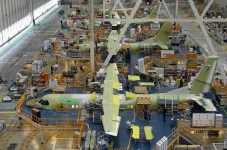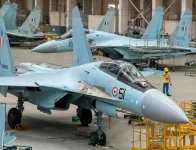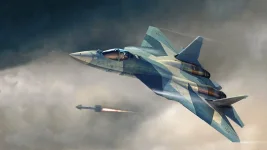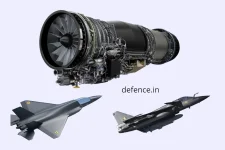- Views: 2K
- Replies: 10
The United States Department of Defence is interested in inviting key international partners, notably India, to participate in its Next-Generation Air Refueling System (NGAS) program.
This potential collaboration is part of a wider US strategy to involve trusted allies in major defence projects, aiming to enhance supply chain diversity and foster international cooperation to meet evolving security demands globally.
For India, which has a growing defence relationship with the US, this invitation offers a chance to enhance technological ties and contribute to a crucial modernization effort for the U.S. Air Force (USAF).
The NGAS program, however, has faced challenges, balancing innovative goals with budget realities. Recent USAF analyses have even recommended potentially terminating the NGAS stealth tanker program due to high costs and its complex relationship with the Next Generation Air Dominance (NGAD) fighter program.
The effort to replace the USAF's aging tanker fleet began around 2006. The USAF planned a three-stage replacement for its fleet of over 400 KC-135 Stratotankers, many operational since the 1950s. The initial stage, KC-X, concluded with an order for 179 Boeing KC-46 Pegasus tankers, derived from the commercial Boeing 767. These are currently entering service, replacing older KC-135s and the now-retired KC-10 Extenders.
The second stage, KC-Y, was intended as an interim step before a more advanced tanker became available. The USAF is still considering whether to seek bids for more commercial-derivative tankers, potentially from competitors like Airbus or Lockheed Martin, or acquire more KC-46s equipped with better self-protection systems, including advanced electronic warfare capabilities.
Originally called KC-Z, the third stage represented the most advanced concept, proposing a stealth tanker capable of operating in heavily defended airspace where current tankers are vulnerable. This concept evolved into the NGAS program, which now envisions not only stealth characteristics (possibly a flying wing design) but also enhanced connectivity, autonomous functions, and integration with future combat aircraft like the NGAD fighter and Collaborative Combat Aircraft drones, potentially aiming for deployment around 2040.
The NGAS program's path has been inconsistent. Early in 2024, its future seemed doubtful as long-term Pentagon spending plans lacked dedicated funding, raising questions about its priority compared to other expensive projects like the NGAD fighter and the B-21 Raider stealth bomber.
However, interest in NGAS revived during mid-2024 following a temporary pause in the NGAD source selection. This break prompted a reassessment of air dominance strategy, highlighting the value of a stealthy tanker operating closer to conflict zones. Such a tanker could extend the operational range of fighters and drones, potentially allowing for fighter designs less burdened by fuel capacity and more optimized for performance and stealth.
Despite renewed interest, significant questions about the cost and schedule for NGAS persist. The feasibility of developing a brand-new stealth tanker, potentially costing hundreds of millions per aircraft, within budget limitations remains under debate. Alternatives being explored include smaller unmanned refueling aircraft or further upgrades to the existing KC-46 fleet as part of a mixed "family of systems" approach.
Against this backdrop, inviting allies like India into the NGAS program signifies a strategic move towards shared development and cost. The US aims to diversify its industrial base, share financial burdens, accelerate technological progress through combined expertise, and improve interoperability within coalition forces.
This aligns with broader US-India defence cooperation, designated a Major Defence Partnership, which includes initiatives like the India-US Defence Acceleration Ecosystem (INDUS-X) launched in 2023 to boost collaboration between defence industries and research institutions.
While participation offers significant opportunities, challenges exist. India's defence procurement processes can be complex, and integrating its industry would require streamlining regulations. Issues surrounding intellectual property, export controls, and technology sharing for sensitive stealth and autonomous systems would also need careful management.
Furthermore, India must evaluate the financial commitment to NGAS against its own defence priorities, such as developing its indigenous Advanced Medium Combat Aircraft (AMCA) and modernizing other key assets. India's tanker needs differ from the scale of the USAF's, and joining a program with an uncertain future could impact its defence budget.
Conversely, India's strengths in software and systems integration, along with its growing aerospace manufacturing capabilities, could offer valuable contributions to the NGAS program, particularly in mission systems, networking, autonomy, and potentially the production of components.




